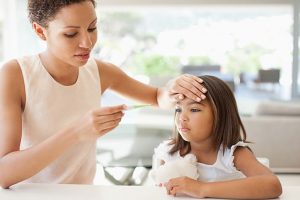
Step 1: ISOLATE.
Fortunately, the simple answer to the above question has stayed the same throughout the pandemic – if you test positive for COVID, you should ISOLATE as soon as you can. It does not matter if you are asymptomatic or have symptoms, if you test positive – ISOLATE. It does not matter if you are unvaccinated, vaccinated or boosted – you still need to ISOLATE. Things get a bit more complicated when we start to talk about how long you need to isolate as guidance has changed with new variants and as we learn more about the virus.
As of early January 2022, the recommendation is to ISOLATE for a minimum of FIVE DAYS. If you have symptoms, Day 0 is the first day of symptoms. If you are asymptomatic, Day 0 is the day you test positive. If you want to be on the safe side, even if you have symptoms, count day 0 as the day that you tested positive.
– After 5 days, if you still have no symptoms or if your symptoms have improved, you may end your isolation, but should continue to be careful (limit exposure to others as possible) for 5 more days and should wear a well-fitting mask whenever you are around other people. If you have access to an ANTIGEN test, you can check at the 5 day mark to see if it remains positive, which likely indicates you are still contagious and should continue to isolate.
– If you still have symptoms at day 5, you should continue to isolate for 5 more days for a total of 10 days.
– If you are more than moderately ill or are immunocompromised, you should talk to your doctor about how long to isolate as you may be likely to shed the virus for longer.
STEP 2: INFORM YOUR CONTACTS
Tell your close contacts and possible exposuress that you have COVID. The CDC defines exposure and close contacts as follows:
Exposure: Contact with someone infected with SARS-CoV-2, the virus that causes COVID-19, in a way that increases the likelihood of getting infected with the virus.
Close Contact: Someone who was less than 6 feet away from an infected person (laboratory-confirmed or a clinical diagnosis) for a cumulative total of 15 minutes or more over a 24-hour period.
When you let them know you tested positive, you can also remind them of what that means to them:
– If they are vaccinated and boosted or have had COVID within the last 90 days: they should plan to wear a mask around others for 10 days AND test 5 days after the exposure if possible.
– If they are unvaccinated or have not had a booster yet if they are eligible: they should QUARANTINE for 5 days, consider testing at day 5 and then continue to wear a mask for a total of 10 days when they are around others.
– If any of the above develop symptoms, they should get tested and isolate while they await the results of the test
STEP 3: MONITOR YOUR SYMPTOMS AND TAKE CARE OF YOURSELF
– Check your temperature if you feel that you have a fever and jot down the numbers so you have a record.
– If you have a pulse-oximeter, measure your oxygen level a couple times a day and keep a record, especially if you have a cough.
– Make sure to drink plenty of fluids- warm tea can help with a cough, electrolyte-enhanced beverages can help you feel better if you have a limited appetite.
– Take tylenol or ibuprofen for fevers, headaches, body aches or sore throat.
– You can try to manage coughs and sore throats with chamomile or herbal tea, hot water with lemon and cough drops or throat lozenges.
– Continue taking your routine medications (although avoid nebulized medications if possible)
– rest, but try to stretch or move around a bit in your space .
– If safe, open your windows to get some fresh air or go outside if you can avoid being around others.
– Call your doctor if your oxygen levels are lower than 93% persistently, if you have high fevers for multiple days, if you have trouble breathing or experience chest pain or if you are having trouble eating and drinking.
Jacqueline Phillips, MD, January 12, 2022


